Australian Tropical Rainforest Plants - Online edition
Amylotheca dictyophleba (F.Muell.) Tiegh.
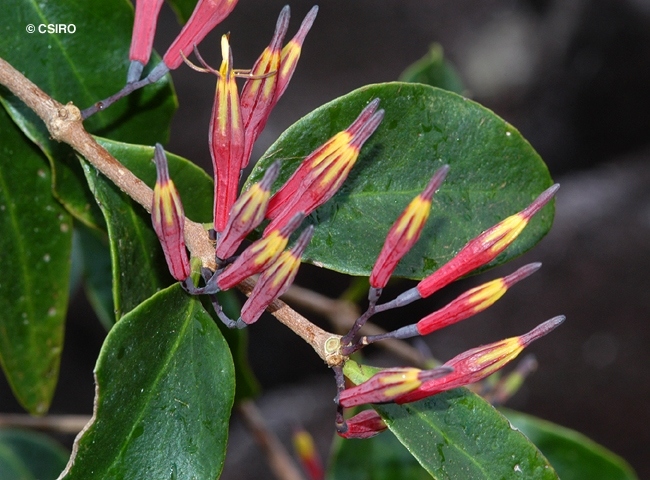

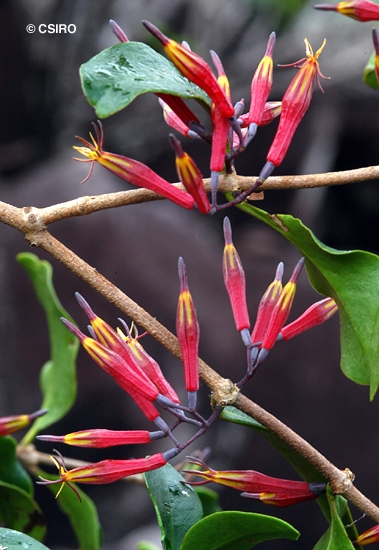
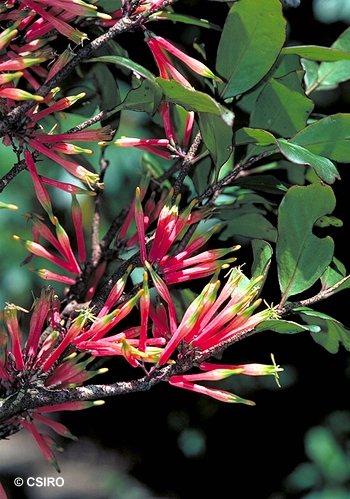
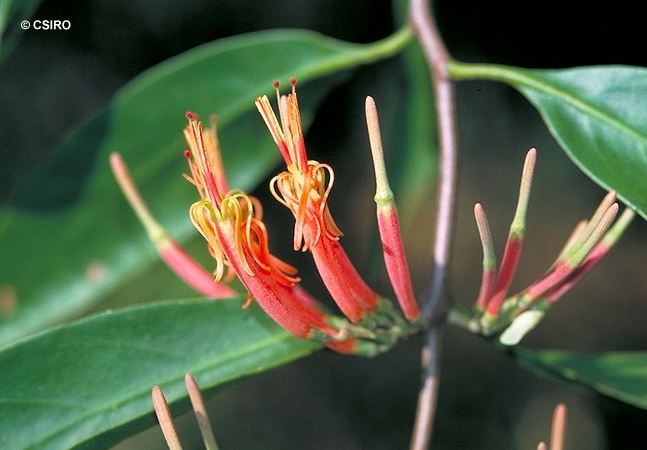
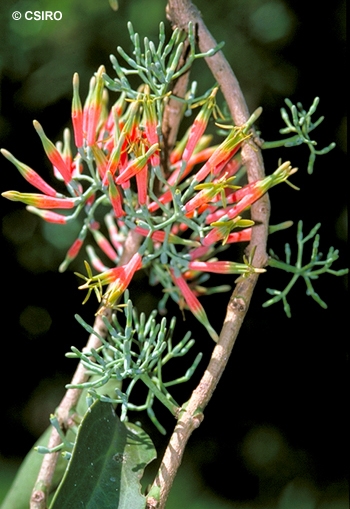
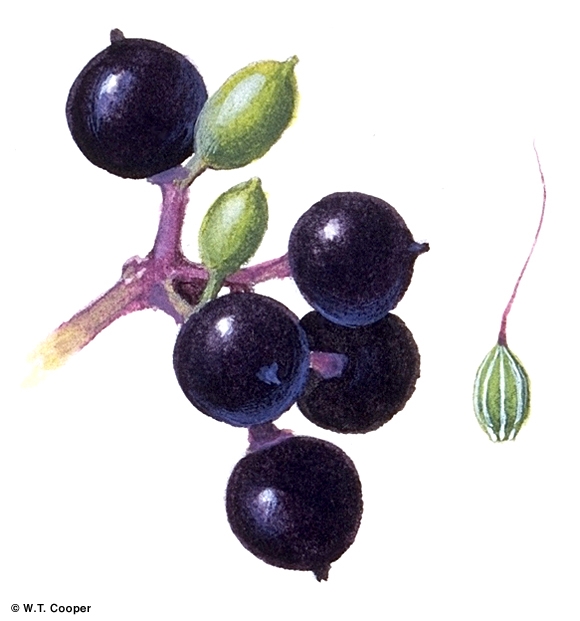

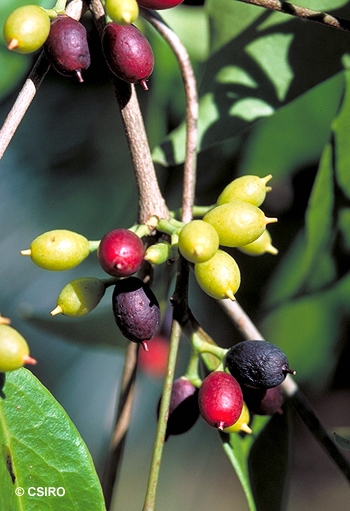

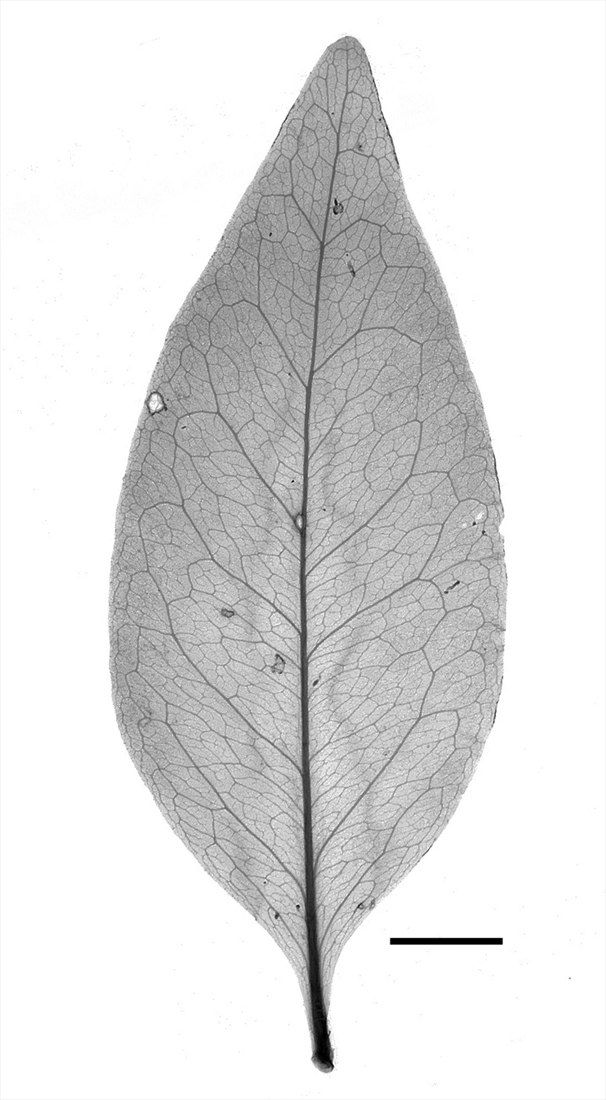
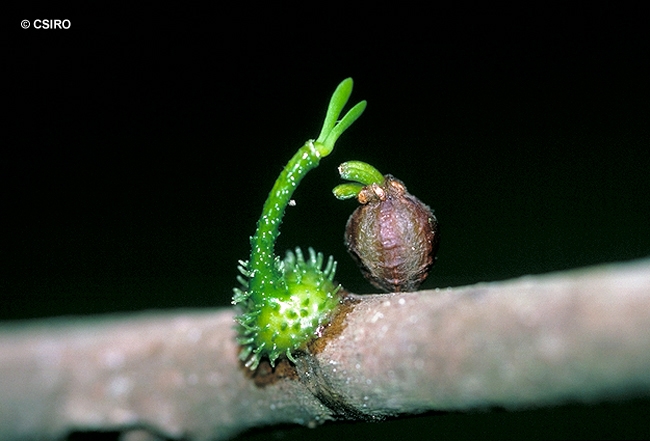
Tieghem, P.E.L. van (1894) Bull. Soc. Bot. France 41: 262.
Aerial stem-parasitic shrub. Epicortical runners present.
Leaf blades about 7-15 x 1-5 cm, petioles about 0.1-0.5 cm long. Lateral veins visible on the upper surface but scarcely visible on the lower surface. Lateral veins often forming fairly distinct loops inside the blade margin.
Flowers usually borne in triads, middle flower sessile, lateral flowers pedicellate. Triads in racemes or the whole inflorescence reduced to a simple raceme. Calyx difficult to discern, about 0.3-0.6 mm long. Corolla about 28-38 mm long, inflated about the middle, lobes about 8-11 mm long, reflexed at anthesis. Anthers about 3-5 mm long, staminal filaments about 2-3 mm long, curved inwards towards the style. Anthers appear basifixed but are rarely dorsifixed. Style glabrous, about 32-45 mm long.
Fruits variable in colour, black, red or yellow at or close to maturity. Fruits ellipsoid to obovoid, about 10-12 x 7-11 mm. Style remnant about 1-2 mm long, persistent at the apex. Seeds obpyriform, about 7-10 x 4-6 mm, surface longitudinally ribbed. A sticky tail about 20-50 mm long attached at on end. Testa sticky and mucilaginous. Embryo about 4.5-7 mm long. Cotyledons about 2-4 mm long, discrete, not fused together. Tip of the radicle armed with backward-pointing hairs or spines. Endosperm pale green or yellowish green.
Cotyledons about 2.5-7 x 0.7-1.1 cm, shortly petiolate, apex apiculate. Hypocotyl and haustorium clothed with green 'hairs' or processes. First pair of leaves opposite, second pair of leaves much larger. At the tenth leaf stage: leaf blade about 5 x 1 cm, apex acute to obtuse, base +/- attenuate, petiole about 3 mm long. Runners present, attaching by means of haustoria. Seed germination time 16 to 62 days.
Food plant for the larval stage of the Trident Pencilled-blue Butterflies. Braby, M. (2000).





